Comparative Study of Religion Archive
Below you will find a description of our previous PhD research that took place.
Heike Aiello
Collecting and interpreting interventions of spiritual caretakers in Dutch hospitals with regard to ‘making-meaning’ and its impact on intrinsic motivation
Management experts argue that tapping into spirituality at work benefits not only individual employees, but also the systems around them. But interventions and conversations that touch this realm are not regularly part of the workplace. How can organisations create a work environment that supports employees to connect with and consequently operate from their intrinsic motivation, which is tied, in our understanding, to ‘meaning-making’ and spirituality?
To answer this question, we use Appreciative Inquiry as a methodology to identify and understand the ways that spiritual caregivers in Dutch hospitals help employees “make deep connections with the core of what gives life to a human system” (Zandee and Cooperrider 2008, 194). The key-question of this qualitative study is: “How do spiritual caregivers in Dutch hospitals support employees in ‘meaning-making’, and what are the consequences on the employees’ intrinsic motivation?” We have identified four subquestions:
-
Which successful interventions with regard to ‘meaning-making’ do spiritual caregivers perform in Dutch hospitals?
-
What is the nature of these interventions (e.g. structural vs. incidental, organized vs. spontaneous, rooted in protocols vs. rooted in persons)?
-
How are these interventions received (and recognized) by members of the respective organization in terms of intrinsic motivation?
-
What is the impact of these findings with regard to HR-practices, and the profession and the training of spiritual caregivers?
We have observed a reluctance within professional organisations to address the concept of meaning-making. At the same time, employees report stress and insecurity by increasing workloads, focus on protocols, and uncertainty through reorganisations. Many express the need for support on questions regarding meaning-making and personal spirituality in order to keep, or restore their intrinsic motivation.
We assume that spiritual caregivers set a good example of how to help a person to make meaning of a (crisis-) situation that will have a positive, generative effect on the persons’ intrinsic motivation. One industry that officially employs professional spiritual caregivers is the healthcare industry. Presently, this group of spiritual caregivers focuses primarily on patient well-being. However, our recent pilot study conducted in the Netherlands, shows that up to 25% of their time is spent on supporting the well-being of staff; many spiritual caregivers are unaware of their positive impact on staff motivation.
Supervisor: Prof. dr. T.H. Zock
Kholoud Al-Ajarma
Mecca in Morocco: Negotiating the Meanings of Hajj in Everyday Life
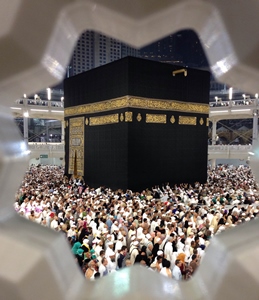
The theme of this PhD project concerns the ways in which Moroccan views on Hajj are negotiated in everyday social relations and micro-practices. In Morocco, being a ‘Hajji(a)’ (someone who has performed Hajj) comes with high religious status and until recently was generally associated with older people. Approaching pilgrimage from the perspective of lived religion‘, this research is informed by the overarching question: How do references to religiosity, social identification and self-identity in personal pilgrimage accounts reflect the ways in which the habitus of hajjis (pilgrims) is informed by various cultural discourses simultaneously?
I seek to answer this question by tracing the Moroccan experience of hajj and stories of pilgrims who have been to Mecca. I explore how a subject‘s religious agency is informed by her or his location within a group and by cultural discourses. Through ethnographic description, the everyday life of pilgrims living in Morocco, their struggles, daily practices, desires and motivations, are presented within a framework of understanding the process of crafting a religious self within group structures. Following the interpretive approach in anthropology, the study draws on the analytical literature on subjectivity, identity formation and the body.
Through this project I analyze how Umra and Hajj are perceived and prioritized in relation to each other and to competing pursuits. Hajj as ‘sensational form’ is predominantly studied by analyzing stories about personal Hajj-experiences. To contextualize interpretations of these Hajj experiences in terms of conceptions of the ‘sacred/mundane’ and ‘Islamic/un-Islamic’ a specific focus in this sub-project concerns shifts in the ‘religious economy’ that can be perceived in Morocco. Until recently, social hierarchy was strongly connected to the possession of baraka (empowering blessings). Exemplifying how various cultural discourses may intertwine, Moroccan views on religious status are currently undergoing change under the influence of individualization processes that accompany rising educational levels. Rather than a form of piety related to baraka inherited or obtained by visiting Mecca or shrines of local ‘saints’, it is increasingly personal piety developed through continual religious self-disciplining which earns a person religious prestige.
Giacomo Baggio
The Commentary on the Vimalakīrtinirdeśa by Sengzhao 僧肇 et alii : a Mirror on Medieval Chinese Buddhism
Zhu Weimojie jing 注維摩詰經 [T 1775] is a commentary based on Kumārajīva’s translation of the Vimalakīrtinirdeśa (completed in AD 406). Even though this work is ascribed to Sengzhao 僧肇 , it is in fact an assembly of three different commentaries written respectively by Sengzhao, Daosheng 道生 ( Kumārajīva’s disciples and translation assistants ) and Kumārajīva himself. Their notes preserved very important information on a number of primary issues related to the evolution of Chinese Buddhism during the Medieval times, such as discussions on doctrinal matters, evolution of the exegetical approach, translation techniques etc..
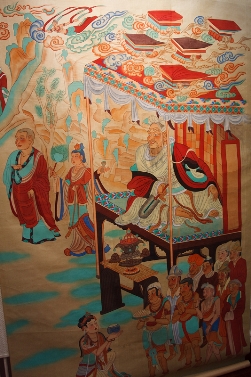
The Vimalakīrtinirdeśa had played a key role in the development of Chinese Buddhism since the Medieval times. This text contributed enormously in shaping the so called “gentry Buddhism”, i.e., a completely sinicized Buddhist doctrine developed through the dialogue and exchange between Buddhist monks and Chinese educated upper class which started between 290 and 320. While wars and disorders were spreading in the North of the country, the literati who took refuge in the South-Eastern regions and lived secluded, away from official positions, immediately identified themselves with the figure of Vimalakīrti, a lay householder who had developed an extraordinary insight into the Buddhist doctrines and a superior wisdom. The perfect coincidence between ordinary life and spiritual accomplishment, between worldly matters and religious attainment expounded in this sūtra perfectly suited Medieval Chinese educated upper classes, thus favoring the acceptance of the newly imported religion and the further discussion of its main concepts and ideas.
Among the three surviving Chinese translations of the Vimalakīrtinirdeśa, the one attributed to Kumārajīva has been undoubtedly the most widespread and influential not only in China, but also all over East Asia. A detailed commentary based on this version of the text [T 1775] which contains information of primary importance for the study of Medieval Chinese Buddhism is still preserved. My research develops from a study of this text under a threefold perspective.
1. Authorship and textual history
Before being assembled into T 1775, supposedly during or immediately after Tang dynasty, the three commentaries on the text by Sengzhao, Daosheng and Kumārajīva circulated independently for some time (the catalogue Zhongjing mulu 眾經目錄 by Fajing 法經 , Sui dynasty, still lists them separately). Thus, as a preliminary work, I will investigate the reasons why they have been put together and the logic behind their rearrangement into one text.
2. Philosophical and exegetical issues
Up to the beginning of the 5th century, Buddhist tenets were generally understood and explained by the Chinese on the basis of the Mysterious Learning, also known as “Dark Learning”, Xuanxue 玄學 , which was the most widespread and influential philosophy among the educated social élite s of the time. The sublime “mystery” (xuan 玄 ) that resides beyond words and images mentioned by Laozi and the unfathomable “emptiness” described in the Buddhist sūtras appeared to coincide: it was then possible to explain many obscure and often abstruse conceptions of the Prajñāpāramitā texts using the rich philosophical lexicon developed by Dark Learning like ben 本 (root, unity)/mo 末 (branches, plurality), ti 體 (substance)/yong 用 (application) etc.
Kumārajīva’s arrival in Chang’an (AD 402), ushered in a new phase of Buddhist exegesis. Through the t ranslation of many important works of the Mādhyamika scholastic and exegetical literature, Kumārajīva provided the Chinese - and in primis his Chinese disciples and assistants - with a new, much more precise and far more orthodox explanation of Buddhist “emptiness” and related philosophical concepts.
The Vimalakīrti Commentary, which not only includes the transcript of the discussions held during the translation process between master and disciples but also the further development of some ideas by the disciples themselves, will serve as a source for the analysis of this momentous shift in Buddhist exegesis, the passage from a Buddho-Xuanxue “concept-matching” to a more orthodox understanding based on the Mādhyamika scholastic literature.
3. Buddhist translation activity: techniques and social significance
The translation of Buddhist scriptures was a complex process that included a number of crucial aspects: an economic one (the translation needed to be sponsored), a religious one (the translation was itself a sacred activity) and an exegetical and philosophical one (each word was analyzed and discussed through a dialogue between the depositary of the text and the monks assisting him in the translation). All these aspects would eventually have an influence on the quality of the final result; as Robinson reminds us, “the quality of the translation was doubtless strongly conditioned by the organization of the workshop and the social circumstances in which the work was done.” (Early Madhyamika in India and China, 1967, p. 81) Even though some aspects of this fundamental Buddhist activity have already been studied (a very good description of the Buddhist translation procedures is provided for example in Zacchetti, Stefano 1996, «Il Chu Sanzang Ji Ji di Seng You come Fonte per lo Studio delle Traduzioni Buddhiste Cinesi: lo Sviluppo della Tecnica di Traduzione dal II al V Secolo d.C.», in Annali Di Ca’ Foscari, anno XXXV, 3 (Serie Orientale 27), pp. 347-374 and Jan Nattier 2008, A Guide the Earliest Chinese Buddhist Translations, Soka University, Tokyo), a lot more remains to be said, and I believe that Sengzhao’s Commentary will prove to be of great help in this respect. This is in fact one of the very few texts recording the views of the translator as well as those of the participants in a translation process along with precious details on the translation activity itself and its techniques.
Vimalakīrtinirdeśa aside, I am particularly interested in the research on Chinese language (classical, medieval and modern), Chinese philosophy (particularly the pre-Qin philosophical traditions and Medieval Dark-Learning), and the interaction and exchange between Chinese traditional thought and Buddhism.
Fatima Ballah
Riffian Women’s Narrative Claims to Full Citizenship
Moroccan women raised in the Netherlands identify with role models from various collective stories such as wives of the Prophet Muhammed, but also Joan of Arc or Florence Nightingale or the scholar Tariq Ramadan. Among women on both sides of the Mediterranean, tv-personalities like the preacher Amr Khaled and the (headscarved) actress Hanan Turk feature as role models who actively participate in modern society as devout Muslims. The aim of this project is to analyse self-narratives on role models in order to examine the dynamics between local, transnational and global factors which contribute to situated forms of personal agency that young adult Riffian-Berber women in the Netherlands and Morocco wish for themselves, i.e. the rights and competences to make their own choices and interact effectively with others. More specifically, the project aims to gain insight in how Moroccan women on both sides of the Mediterranean draw from the various cultural traditions they identify with to underpin claims to citizenship in the sense of full membership in a community with all its rights and obligations.

Brenda Bartelink
Religion and Development
"One thing passed through all sectors of life, has been the HIV/AIDS epidemic. Over the years this has been a very big problem to the young people, as well as the old.” Drinking a coke together at a courtyard somewhere in Northern Uganda, Father Peter is telling me about the practical challenges in his work as a pastor and teacher. He continues: “The Catholic Church preaches that, in order to challenge HIV/AIDS, one has to abstain from sexual behavior. Married people should stick to one partner and don’t use the condom. Many young people have a problem, they are sexually active and not married yet and it is hard to abstain.As a pastor I am faced with this issue and have to offer solutions. How should I handle this; tell them to abstain when they find it hard to abstain? We are at a crossroad here."
Similar challenges were voiced in the many interviews I did while doing fieldwork in Uganda. The fieldwork, being part of my research on faith based organizations active in development cooperation, showed how religion and development are intertwined in practice. Obviously the position of the Catholic Church on condoms is a widely known, debated and criticized one. However, this father Michael was not explaining the position of his church, he was reflecting on the cooperation between development organizations from Uganda and the Netherlands on improving HIV/AIDS prevention in the education sector. Thus, this example doesn’t only refer to the challenge of combining religious ideals with the practice of everyday life; it also reveals the challenges of cooperation between organizations rooted in different countries, cultures and religious histories. While Dutch protestant or catholic development organizations are in favor of a comprehensive approach to sexuality, this isn’t evidently the case for its partners in Uganda or Kenya. Realizing this, Dutch organizations with a religious affiliation or background invested in a better understanding of the role of religion in development cooperation.
In the last decade an increased interest in religion can be noticed and the so called return of religion to the public sphere has been widely debated. Influenced by these debates as well as with practical dilemmas such as the one described above, new discourses on religion and development have been constructed within international development cooperation. While discourses have been constructed in the past ten years and following that formal and informal institutions and networks were created, cooperation on development issues along religious lines have been existing for many decades. That observation informed this research focus on discourses and practices on religion and development. By combining approaches from religious, social and development anthropology, it aims at analyzing such discourses in the context of the power relations between actors involved in the practice of development work and their views, motivations and agenda’s.Case studies, such as the one on HIV/AIDS prevention and education in Uganda, indicate that the practice of development cooperation is more complex, but also more flexible than dominant discourses may suggest. Qualitative research and analysis is chosen to do justice to the richness and complexity of development cooperation in practice.
Contact Brenda Bartelink
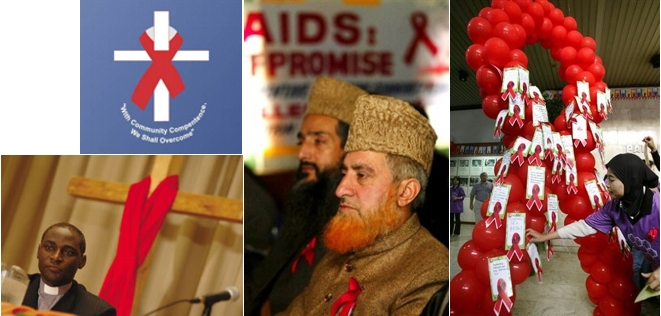
Anand Blank
Virtues in Sermons of Imams
Subject
The project concerns virtues in the Islamic religion as viewed by Dutch imams.
Relevance
The project means to fill a conspicuous gap in the understanding of Dutch Islam. Most studies concern the organization and social position of the three most important Islamic groups in the Netherlands: Turks, Moroccans, and Surinamese. But we know very little about the contents of faith in these groups, which is in our case measured by the religious virtues these groups endorse. Neither do we know where to place the dividing lines between different groups on this point: is the traditional division into Turks, Moroccans, and Surinamese still viable? And if we go one step further: how large are the differences on this point between muslims and christians? Firm knowledge about these matters is a requisite for a nuanced understanding of Islam in the Netherlands.
Questions and Hypotheses
-
What virtues do imams consider important? Which are the most important. We expect to find that Muslims agree on most points with Christians in the virtues they consider most important.
-
What sources do the imams use in preaching virtues? We expect to find an emergent Dutch Islam in which the differences between the traditional important Islamic groups are relatively small.
-
Do the imams use the internet when preparing for a sermon? If so, what sources and websites do they consult? And if not, why so? We expect younger imams who speak Dutch to make relatively heavy use of the internet.
Methods
The imams of a sample of 30 Dutch mosques will be interviewed. The sample is arranged mainly according to ethnicity: ten Turkish government mosques, six other Turkish mosques, ten Moroccan mosques, and four Surinamese mosques.
The data will subsequently be analyzed both statistically (quantitative analysis), and theologically (qualitative analysis).
Li Gang
The relationship between Islamic law as living law with state/official law in China both in the historical and contemporary context
I obtained a degree of Master in law (jurisprudence) at Xinjiang University, P.R. China, with a thesis on “The Deconstruction of the Post-modern Theory to Gendered Law: from the perspective of the development of the concept of gender in feminist jurisprudence”, which investigated the historical development of the relationship between gender and law since the emergence of feminist jurisprudence and then further, by challenging the male patriarchy coherent to rationalism, see how the concept of gender from a post-modern perspective could shed light on the justice and equal treatment of law. I got my second MA in Studies on European Union and Central Asia in the International System at Centre International de Formation Europeenne, Institut für Europäische Politik in Germany, with a thesis on “A Constitutional Approach of the Building of European Identity: On Habermas’ post-national collective identity building theory” which dealt with Habermas’ collective identity building theory in the politically as well as a culturally diversified EU context. I am currently doing a double-PhD with the University of Groningen and Friedrich-Alexander University of Erlangen-Nürnberg, focusing on the issue of the relationship between Islamic law as living law with state/official law in China both in the historical and contemporary context to see how Islam represented by its norms (Shari’a) has been interacting with Chinese state/official law and how these interactions influence and contribute to the constructing of Chinese tradition which is the precondition of future building of the rule of law and democracy in China.
Iis Istiqomah
The Hadrami Arabs of Ambon: An ethnographic study of diasporic identity construction in everyday life practices
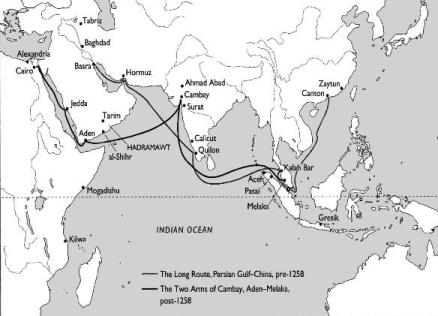
The history of the Hadrami Arabs from Yemen who migrated to the Indonesian Archipelago in the nineteenth century is often regarded as a success story in terms of transnational economic, political, and religious engagement. One of the main factors contributing to this success is often perceived to be their sharing a Muslim identity with mainstream Ambon society, while preserving a distinct, Hadrami cultural identity. This specific combination of claiming sameness and difference simultaneously provided them with social and symbolic capital that enabled them to develop and maintain networks both in local settings and in their country of origin. However, the emphasis on a distinct cultural identity is also considered to hamper their full integration into the host-societies.
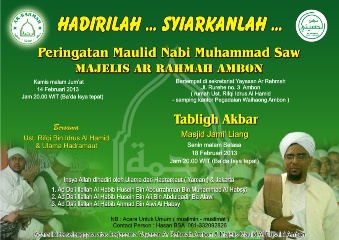
The active maintenance of a distinct cultural identity as Hadrami Arabs in Indonesia is accordingly shaped by social, political and religious developments both in the Hadramaut and in local contexts. Particularly the drawing on Islam as a cultural and religious source has played a major role both in the construction of a distinct cultural identity and in local social integration processes. Interestingly, the emergence of Islamic reform movements in the beginning of the twentieth century added a new dimension to the transnational religious positioning of diasporic Hadrami Arabs. The symbolic dominance of sada (singular: sayyid) Hadrami, who claim descent from the Prophet Muhammed, was increasingly questioned and challenged by local reformist Muslims from both within and outside the Hadrami community.
Heidi Jansen
"Meaning: Inquiries into the Future of Work"
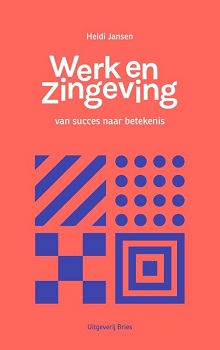
The way we work is changing. Flexible job appointments, digitalization, individualization and globalization create a different labour market. What does this mean for our way of working? Work is an important source for finding meaning in life, I stated in my earlier research which resulted in my book “Werk en Zingeving”.
My PhD-research focuses on how management and the HR department of organizations experience these changes and what they do to prepare employees for this. Their answers may raise topics that need a new approach. To find a new approach I look for insights In sociological, psychological, organizational studies, and in particular in theological/spiritual reflection on work from the recent and contemporary Roman Catholic tradition.
Borja Martin-Andino Martin
Illness, health and care in contemporary Spanish Christianity: a multiple case study
Illness and its suffering are phenomena inherent to the human condition that, over time and space, receive different forms of being conceptualized and lived. Different forms of social response are organized around them, key to the reproduction of any society. Health and illness are involved in social, political and economic processes in which people’s experience depend on structural differences.
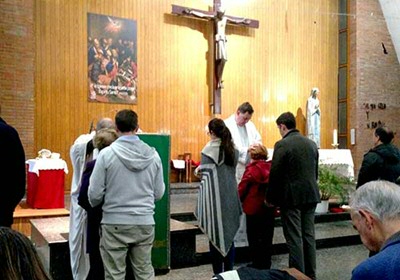
In Weberian secularization theory, modernity in the West is linked to the separation of religion from «value spheres», such as the State, economy and science. However, in the post-secular religious field, as far as illness and health are concerned, it seems that such separation is not absolute. Despite the Western hegemony of the biomedical model in health care, other logics about the body, illness, health and care are present in the contemporary religious and spiritual realm.
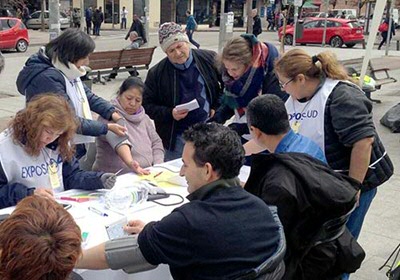
In order to explore these social and cultural features within Christianity in contemporary Spain, my research takes three case studies. The selection balances differentiated positions with respect to dominant religious and medical models. Catholic Charismatic Renewal is a minority movement in the Spanish Catholic Church, the majority confession in the State, hegemonic in cultural matters. Charismatic Renewal offers «inner healing», in fact complementary to secular psychotherapies, but with a spiritual basis. Christian Science is a religion with a reduced population today that emphasizes the healing of the individual through spiritual awareness, achieved through the «study» of confessional literature. Seventh-day Adventist Church is well known for its promotion of biomedicine and prevention in health, based on the so-called «eight natural remedies» among its congregations and the public sphere.
Using the ethnographic method and its main techniques, participant observation and semi-directed interviews, I work in my research with people in these religious confessions to discover conceptions, representations and practices about health and illness, paying attention to structural varieties, with the intention of recognizing their needs of affliction not only in a biological sense, but primarily in its cultural and social sense.
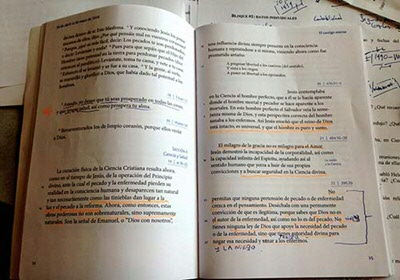
The main focus is the exploration of what could be called an «orientation to well-being» in contemporary Spanish Christianity, that is, a final ideal of subjectivity characterized by the wholeness of the individual in its various constituent dimensions (physical, mental, spiritual) that depends, for its definition, on its opposition to the spiritual, mental and physical state of ailment, overcome or avoided. This ideal of subjective transformation is achieved through institutionalized attitudes and ritual practices (both individual and collective, and both private and public) in which the relationship with a power of supernatural order is implicit. From this perspective, the orientation to well-being in Christianity is a symbolic complex insofar as it is built on particular meanings, normative because it is established on the basis of systems of sanction and validation, and political because it contributes to regulate the living of the people, as well as the relations with other external identities.
Elizabeth Mudzimu
Religious and Cultural Encounters in Development: Women’s Sexual and Reproductive Health Rights in Zimbabwe.
This project investigates how Zimbabwean women navigate their sexual and reproductive health rights against a backdrop of demands from Christianity (specifically Catholicism) and African religion. Its case study is the Korekore women in a district in Zimbabwe called Muzarabani. Among the Korekore people, women are regarded as the cornerstone of societal development. However, fulfilling their potential is stifled by numerous factors, including the pressure that is exerted upon them by the encounter between Christianity, since its advent in Zimbabwe and African indigenous religion, in this case the religion of the Korekore people. Apart from limiting women’s potential, religion also interferes with their sexual and reproductive health rights which are key for their agency in reducing poverty and enhancing development. Thus, in a patriarchal and conservative society such as the Korekore people, culture and religion can be stumbling blocks to the rights of women to make choices and decisions regarding their sexuality. The project is of applied relevance since it seeks to ascertain practical measures to address those religious and cultural traditions that do not promote women’s sexual and reproductive health rights.
For additional information: Lobola: it's implications for women's reproductive rights
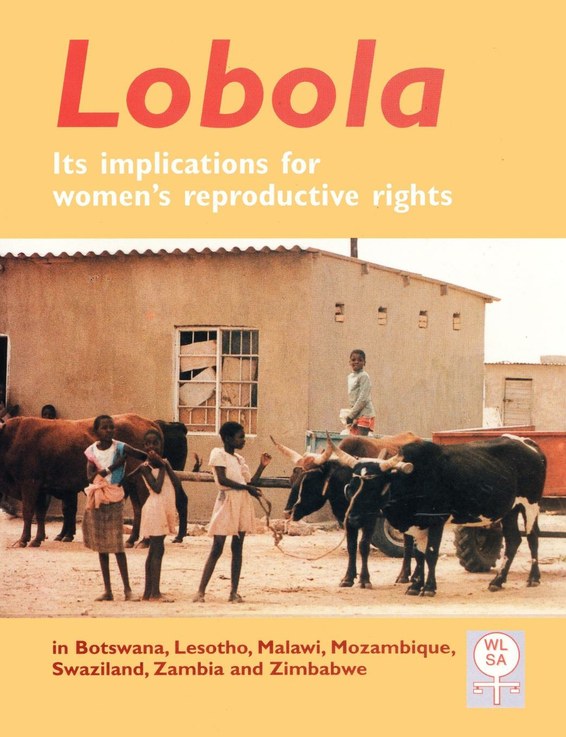
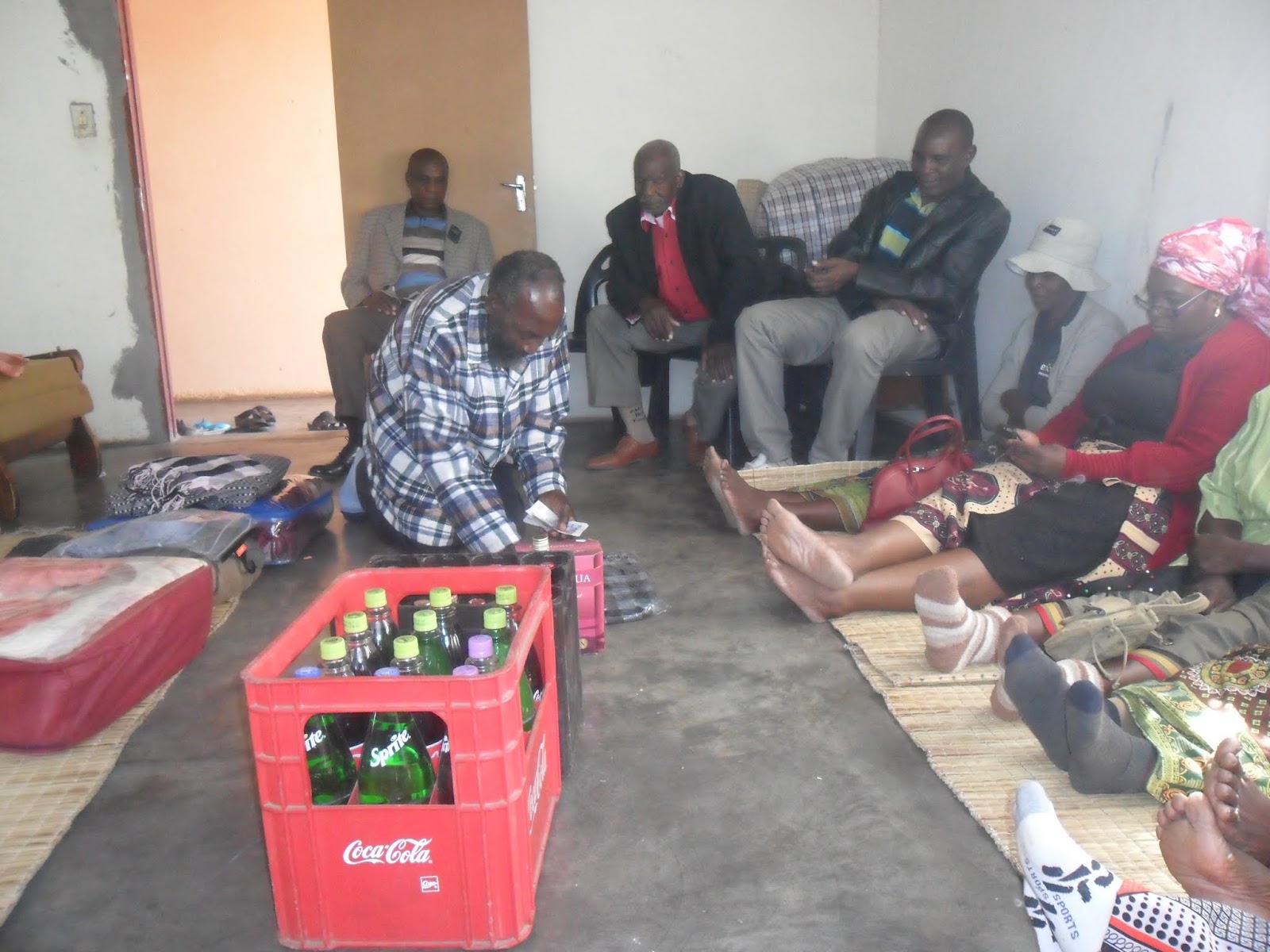
Pieter Nanninga
Salafi Jihadist Martyrdom Videos
My research focuses on jihadism, and in particular on jihadist violence and media usage. My dissertation Jihadism and Suicide Attacks: al-Qaeda, al-Sahab and the Meanings of Martyrdom (Jan. 2014) analyses the central role of suicide attacks in jihadist discourse over the last two decades. For this purpose, I have analysed the martyrdom videos of al-Sahab - the media group of al-Qaeda (Central) - which consist of extensive and rather professional films about suicide bombers and their attacks. My dissertation argues that jihadist suicide attacks should not be primarily understood as a profitable means to battle the enemy, but rather as symbolic violence that expresses some of the central themes of the jihadist movement, such as honour, dignity, sacrifice and purity. By embodying some of the core symbols, values, narratives, beliefs and practices of jihadism and by establishing boundaries between jihadism and its challengers, ‘martyrs’ can be considered living definitions of the jihadist movement. In this capacity, they are crucial for publicising the jihadist cause, fostering a sense of solidarity among the highly diverse participants of the movement and empowering them as members of the umma’s vanguard that will be victorious in the end - either in this life or in the next.
For detailed information about Pieter Nanninga see his personal page .
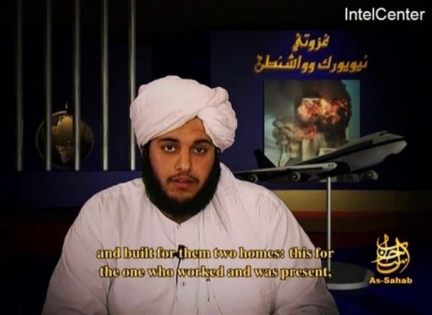
John O. Ojo
Charismatic leadership, organizational dynamics and the growth of independent Pentecostal churches in Lagos metropolis
This study explores the manner in which and the extent to which charismatic leadership and organizational dynamics impact on the growth of independent Pentecostal churches in Lagos metropolis. Specifically, the objectives of the study are to:
-
investigate the extent of the influence of the charisma of the leaders, who are also the founders, on the growth of the independent Pentecostal churches in Lagos metropolis.
-
examine the leadership styles and organizational structures that emerge in the process of the routinisation of the charisma of the leaders of the selected churches.
-
explore the differences between the male and female leadership styles and how these impact on the organizational structures in the selected Pentecostal Churches.
-
discuss the connections of the material world and the public image of the charismatic leaders to the power these leaders exercise within and outside their religious communities.
-
discuss the exercise of administrative control and the succession plans in place in these churches.
Pentecostal churches constitute a significant strand of contemporary Nigerian Christianity (Ojo, 1988; 2006), (Marshall, 1992), (Burgess, 2008), (Kalu, 2008) and (Ukah, 2008). Since their emergence in the early 1970s, they have grown rapidly and have proliferated to over five thousand groups, and have occupied media attention as they tried to enlist mostly the educated elite and also promote a redemptive theology and spirituality to cope with the social and economic dislocations in the society.
Charismatic leadership is very important because these leaders emerged outside formalized structures, yet they are socially important in contemporary Nigeria. Besides, they seem to have some unique ability and charisma that helps them to put up a dynamic organizational structure, which in turn helps grow their churches and sets them apart from other existing churches. In the early years, these churches had no fixed administrative routines, but over the course of time, the churches have grown to become big organizations with complex bureaucratic structures with specialized and professionals leaders.
The study focuses on five purposively selected independent Pentecostal churches established in the 1990s within Lagos metropolis and whose leaders are considered by their members as vibrant and with exceptional charisma. These churches are The Redeemed Evangelical Mission, Power Pentecostal Church, Daystar Christian Centre, Fountain of Life Church, and Mountain of Fire and Miracles Ministries. Lagos, Nigeria’s former capital is the commercial and economic nerve center of the country with over 1000 churches, perhaps with the highest number of churches in Nigeria, mostly of independent Pentecostal and Charismatic churches. Some are big while many are small still struggling to survive – but they all compete for visibility and social relevance. The concentration of newspapers and magazines with national coverage in this megacity has further given social visibility to the independent Pentecostal and Charismatic churches as they increasingly utilize the media for enlistment of members.
Intan Permata Sari
Between Cultural and Political Identities: State and Society in the Making Enggano, an Outer Island in Indonesia
Enggano's identity has been constructed by various factors, such as past experiences, collective memories, pressure from government policies, and the influx of new people and values. On the one hand, the people of Enggano maintain local wisdom, traditions, and customs derived from the experiences of their ancestors; on the other hand, these values must be adjusted to various state interests. Government regulations and policies have increasingly threatened the existence and identity of tribal communities. As such, Enggano is a site of contestation, with the people of Enggano asserting their cultural identity while the state promotes its brand of nationalism. Being isolated does not mean being outside the reach of state regulations and interests (which tend to ignore local interests).
The Enggano community is built on its response to socio-cultural and economic changes that have occurred over a long period of time. Facing outside pressure and being forced to accept new 'modern' values in the fields of religion, culture, economics, and social organization, Enggano has been integrated into the national socio-political system as new laws have allowed the state to enter and interfere in the formation of its identity. This study not only investigates the rejection and acceptance of change, but questions how these significant changes have been addressed by the Enggano people and how they have utilized these changes for their own betterment. In other words, this study looks at how contestation between local cultural authority and national political authority takes place in Enggano.

Tsila Rädecker
Modernization and the formation of the Jewish identity 1793-1848
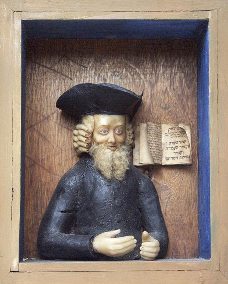
With the new migrant communities in the Netherlands questions of identity, citizenship and religion are as vibrant as ever. The Netherlands have a long history of immigration and one of the first and largest migrant communities struggling with these questions were the Ashkenazi Jews of Amsterdam. During the seventeenth century the first Ashkenazi migrants arrived from middle and Eastern Europe as a result of the pogros there. They differed from Dutch (Christian) society and the already present Sephardic Jews in culture, language and wealth; consequently they were pushed to establish their own autonomous community. During the eighteenth century however, this ‘status aparte’ of Dutch Jewry came under increasing pressure from forces in- and outside the community. My research focuses on the transition of Dutch Jewry from foreigners with a separate religious state in the Netherlands to a religious minority in Dutch society and how this transition influenced the Dutch Jewish identity.
In the Dutch Ashkenazi community, religious and political control went hand in hand. The lay leaders appointed a chief rabbi who represented religious authority, as such he was the gatekeeper of the Jewish identity; he determined the kosher foods status, was responsible for education and the rites de passage. The religious and lay leaders held a monopoly on the sale of kosher food and enforced it strictly: if a Jew violated the dietary laws, he was excommunicated. Transgressions were punished severely because it threatened the unity of the Jewish community and evoked the Lord’s wrath. Religious social control was used as tool to demarcate and protect the boundaries of Jewish identity and the Ashkenazi leaders judged and convicted any transgressors. [1]
Enlightened Jews challenged this situation. Enlightenment ideals divided the community into those who advocated and those who rejected reform. The idea of reason as the sole source of knowledge and legitimacy of authority threatened the Jewish establishment. Lay and religious leadership was questioned and disputed by new elites, who wanted to abolish the ‘status aparte’ and self-government of the Ashkenazi community. They strived for equal rights and participation of Jewish communities in Dutch society. Granting of citizenship, integration and emancipation challenged the old order and forced rabbis to reformulate the Jewish position. This clash of cultures between conservative and progressive forces caused a temporary split of the Ashkenazi community into the Naye Kille (new community) and the Alte Kille (old community) and cumulated in the publication of the satirical periodical the Diskursen in which both communities discredited each other. [2] The responses to the Enlightenment developed eventually into the reform movement, who accepted it, and the orthodoxy who rejected it.
Orthodoxy was the traditionalist reaction to modernity; it opposed non-Jewish influences and change. The reformation of the Jewish educational system in particular was strongly resisted and the introduction of ‘worldly knowledge’ such as philosophy received stiff opposition because rabbis feared it would be at the expense of the Jewish curriculum. Furthermore, they believed that recognizing the non-Jewish world would lead eventually to the demolition of the Jewry.[3] Any change in the curriculum promoted assimilation and its feared consequence: conversion to Christianity. The proponents of the Enlightenment considered the rabbis who tried to halt the educational system’s reformation backwards and a hindrance to modernity.
Citizenship and the granting of equal rights at the end of the eighteenth century forced the Ashkenazim to redefine and reshape their identity. The Ashkenazi identity lost its legal component or ‘status aparte’ when the Jewish Nation was abolished. They were naturalized, their self-government was ended and they became citizens of the Netherlands, which was at the time under French rule. A key aspect of the emancipation decree was the disentanglement of religious and political authority the Ashkenazi leaders wielded, and the state absorbed the political powers of the Jewish leaders. Ashkenazim were like other Dutchmen, which forced the community to reconsider its self-image.
After the emancipation decree, different committees were appointed by the state to govern the Jewish community (including its religious appointments) in an attempt to nationalize the Jewry. By exercising control over the Ashkenazi religious leadership, the Dutch state attempted to modernize this migrant community. Furthermore, the Dutch Jewish seminary was founded where all the rabbis received an education before they could hold office and the Yiddish language was outlawed in education and sermons. The rabbis and their orthodox following resisted this Dutch infringement on the Jewish self-government and the state’s attempts to reduce the aspects of identity that showed Jewish foreignness. In short, in my research I will investigate the interaction between religion, modernization and the nation-state and how this influenced the formation of the Jewish identity.
-
Tsila Rädecker, ‘En op dezelfde manier dat ze me zullen vergeven hier voor de aardse rechtbank zo zullen ze me vergeven voor de hemelse rechtbank’. Kerktucht bij de Hoogduitse Joodse Gemeente 1737-1764 (MA thesis Social History, University of Amsterdam 2008) passim.
-
Jozeph Michman and Marion Aptroot, Storm in the community. Yiddish Polemical Pamphlets of Amsterdam Jewry 1797-1798 (Cincinnati 2002) and for a pan-European Kulturkamf see: Shmuel Feiner, The Jewish Enlightenment (Philadelphia 2004).
-
Shmuel Feiner, The Jewish Enlightenment (Philadelphia 2004) 145.
Lea Schulte-Droesch
Making place through ritual - Territory, environment and region among the Santal of Middle India
My research focuses on the Santal, one of the largest tribal societies of Middle India and on their practice of making place through ritual. Based on long term ethnographic fieldwork in Jharkhand the project aims to show how different rituals reveal and continuously recreate peoples’ perceptions of place. Through this approach different aspects of Santal cosmology will be explored, showing that ideas of place are entangled with religion, kinship and politics.
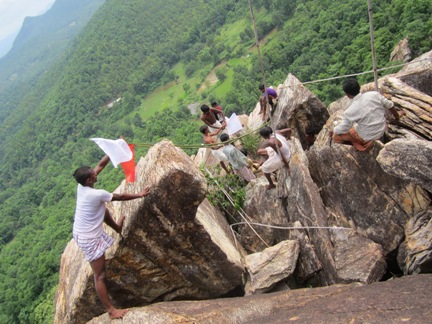
In my work I study Santal ways of making place through three steps, each one referring to a different notion of place:
The first two rituals I introduce refer to place as territory. These rituals take the shape of a large sacrificial feast for the common deity of a local social group. The place of these sacrifices points to relations between ancestral activity and the roots of this social group. Besides the patrilineal aspect of kinship this part of my research further explores Santal marriage practices and how these link different territories.
In a second step I focus on Santal perceptions of the environment, particularly the forest and hills. These are articulated in two major annual ritual complexes: hunting rituals and the rituals for the mountain gods (buru bongas). Through worship, celebration and narrative these rituals give insight into the socio-cosmic structure of this area. Both relate the deities of these spheres to rain and ultimately link them to the fertility of the fields.
The third notion of place refers to the region and bears strong political connotations. In the last decades, local politicians and activists have transformed several village festivals into regional ones. These give rise to an increased display of Santal culture and often make reference to a more globalized image of the Santal as indigenous people. This negotiation of what constitutes “Santal religion and culture” is further taken up by several reform movements in this region. Their views and attempts of “purifying” Santal custom are discussed in this context.
In conclusion, my project explores Santal rituals under the perspective of place and attempts to draw a contemporary picture of the different connotations this concept bears for the Santal.
Saara Toukolehto
“Even if I do things perfectly, I can never become ‘German’”: The paradox of immigrant integration in post-“refugee crisis” Berlin
In the past two decades, in particular after the arrival of an estimated 80,000 refugees in Berlin, Germany during the so-called ‘refugee crisis’ in 2015, the Berlin Senate has directed significantly more funds to integration measures, and outlined guidelines for promoting successful integration such as language learning and integration to the job market. Additionally, integration discourses have emphasised shared democratic “core values and rules” that have to be accepted by immigrants.
Through ethnographic fieldwork conducted in 2018-2019, in this doctoral dissertation I investigate different emic conceptualisations of integration and the kinds of practices and reactions these have provoked in the grassroots contexts of inner-city Berlin.
While the word integration seemed to be on everyone’s lips, the question “what does integration really mean?” was often posed by individuals targeted by integration measures as well as other stakeholders in one way or another related to the field of integration. Many of my interlocutors saw integration as an ambiguous and ambivalent concept, not least because of its seemingly paradoxical nature that labelled people as immigrants through a growing demand for integration, thus reinforcing the very category of outsideness that integration is ostensibly meant to diminish.
The two main case studies are:
-
A Neighbourhood Mothers integration Programme that targets particularly Muslim women and represents one of the most long-lasting integration measures in the city. It is based on a peer-to-peer format in which immigrant women are trained to do integration work in their local communities.
-
A grassroots Neighbourhood Initiative spontaneously formed by active Berliners in order to support disenfranchised groups, asylum seekers and refugees in particular, and to provide a creative platform where people from different backgrounds can come together and ‘learn from each other’.
Both of the case studies, while fundamentally different and in some respects even opposing, rely on a notion of ‘from us to us’. In this respect, the analysis explores how refugees and immigrants already settled in the city were engaging in activities of ‘giving something back to society’ often making use of their embodied knowledge that I call ‘immigrant expertise’. This type of knowledge was seen as increasingly valuable and important in the official contexts of integration policy-making as well as amongst grassroots movements.
Instead of using existing theories about immigrants’ integration trajectories, their processes of acculturation, or theoretical notions of socialisation, in the analytical discussion, I make use of structural anthropological theory from scholars such as Sahlins, Dumont and Robbins. I focus on investigating sociocultural change and continuity through identifying cultural categories and values and the dynamic and shifting relations between them. Through ethnographic analysis, I suggest that the 2015 “crisis” can be conceptualised as an event of great sociocultural significance that resulted in a peak of integration as an idea ultimately culminating in a further shift towards a politics of participation that has come to challenge the language and practice of integration in the city. This paradigm shift reflects more fundamental changes in core ontological categories such as society, 'Germanness’ and belonging and presents a concrete example of how change and continuity are mutually constitutive.
Tom Versélewel de Witt Hamer
A sociological study of the functioning of contemporary Orders of Chivalry in the Kingdom of the Netherlands
A sociological study of the functioning of contemporary Orders of Chivalry in the Kingdom of the Netherlands In recent decades academic interest in nobility and chivalry has increased noticeably. Nobility and orders of chivalry, once synonymous with nobility, have been mostly studied from a historical, biographical or prosopographical perspective. Only little attention has been paid to the contemporary activities of the Dutch nobility. Dronkers was one of the first to look at present-day nobility from a sociological perspective. His study on the social relevance of contemporary Dutch nobility made an oblique reference to the domain of orders of chivalry. Orders of chivalry are as old as the crusades, as they originated from religious orders whose main purpose was to protect pilgrims in the Holy Land. In the centuries following the crusades they developed from religious military orders into monarchical lay orders. These were created by emperors, kings, and other sovereigns who gathered a group of vassals around themselves. During the post-medieval period, orders evolved increasingly more into orders of merit, be it state orders or otherwise, which enabled sovereigns to recognize and reward meritorious persons.
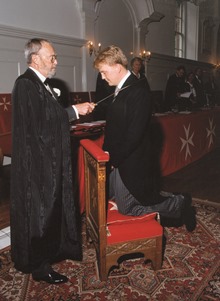
Nowadays, the Dutch orders of chivalry are the recognized successors of the old religious military orders from the time of the crusades, not to be confused with orders of knighthood, which are state merit orders. Chivalry is a criterion of the Dutch Supreme Council of Nobility. It refers to a noble order which has formulated a clear admission policy in its charter like the Order of Saint John in the Netherlands and the Order of Malta. Any organization in the Netherlands is free to call itself an order of chivalry, although the guidelines of the Supreme Council of Nobility state that it will belong to the unrecognized orders. Studies on unrecognized orders of chivalry mostly focus on the question of their legitimacy. The aim of this study is to gain a better understanding of the contemporary functioning of recognized as well as unrecognized orders of chivalry in the Netherlands from a sociological and anthropological perspective. A study of that sort does not yet exist.
Viewed over a longer period of time, class differences in the Netherlands have become smaller. In contrast, orders of chivalry are symbols of inequality in a democratized society and refer to a feudal past. Although the Dutch orders of chivalry all are 20th century re- invented institutions (with one exception), their present functioning is based on certain traditions which implies continuity with that feudal past. In conclusion, the objective of this study is a comparative analysis of present-day recognized and unrecognized orders of chivalry in the Netherlands in order to answer the question as to why and how they continue to exist in modern Dutch society. To this end, new theoretical insights will be developed on the basis of empirical quantitative and qualitative research and studies on social stratification and distinction, religious affiliation / spiritualty, social cohesion and invention of tradition. The research period covers the mid-1960s (post-pillarisation) till present.
Klaran Visscher
Jozef Rulof and the revelations of the “Age of Christ”. New religiosity in the Netherlands and the crisis of modernity in the twentieth century.

This project focuses on Jozef Rulof (1898-1952), self-proclaimed prophet of the “Age of Christ” and medium in the service of the so-called ‘cosmic Masters from the Other Side’. Living in the Netherlands Jozef Rulof operated in an industrious way, as a ´cosmic painter´, trance lecturer and writer of many books which were said to be dictated by the Masters. His aim was to deliver the final and convincing proof of the continuity of human life and development, biological as well as spiritual, after death. In an ongoing process, both on a collective and an individual scale, humanity is believed to move forward – meanwhile migrating from planet to planet, from one spiritual sphere to another – in order to reach its ultimate destiny: to be close to God.In ‘Rulofism’ this evolutionary process is said to be ruled by a complex system of cosmic laws that are based on the principles of reincarnation on the one hand and on cause and effect on the other. Jozef Rulof claimed to be the chosen one who would explain these cosmic laws to humanity and to urge his contemporaries to welcome a new cosmic age, starting around 1945: the “Age of Christ”.It can be said that his following has been rather marginal but steady, from his own days up till now.
In an earlier study I engaged the reception and distribution of Rulofism in the Netherlands until about 2008, as well as Jozef Rulof´s ‘cosmic painting’ (research master Religious Studies,University of Amsterdam, 2009). In my PhD-project I will present an analysis and interpretation of Jozef Rulof´s work in the context of its time and place; therefore, the study also addresses a chapter of the Dutch religious history of the (early) 20th century. I am particularly interested in the connection that might be found with the complexity of ‘the project of modernity’ in Western European societies, which often led tocultural criticism articulated by – amongst others – prophets and artists; both labels may be applicable to Jozef Rulof. Another aspect that I will attend to is the assumption that Rulofism might be seen, at least partially, as a response to the threat of war and subsequently the hardship of daily life in a bombed and occupied Dutch city, offering a sense of meaning or religious coping strategy to people who look upon themselves as powerlessand being victimized.
Contact Klaran Visscher
Dave Vliegenthart
Franklin Merrell-Wollf: a reasoned flight beyond reason
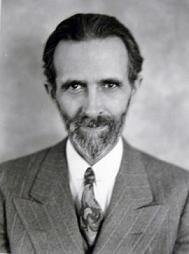
"New Age" individuals and movements tend to emphasize a pure or immediate experience-of reality, the self, (un)consciousness-at the expense of reason. It is all about "going out of your mind and coming to your senses." They promote an anti-intellectual attitude, which perceives the rational intellect with suspicion. Historian of religion James Webb once even referred to them as a collective "flight from reason." And yet, their anti-intellectual messages have often been developed into (highly) intellectual systems, by and for intellectuals, which combine methods and theories from eastern and western religion, philosophy, psychology and science. How to account for this paradox?
Though not a complete explanation, I submit part of the answer lies in the fundamental loss of meaning after World War I, and again after World War II, which sparked a widespread interest throughout the West in (similar) unconventional socio-religious ideologies. Using the life and teaching of American philosopher-sage Franklin Merrell-Wolff (1887-1985) as an unknown but typical example, I suggest a rise (in awareness) of "proximate others" in the first (1920-1940) and second (1960-1980) New Age, forced the founders of new religious movements to develop their "unique" ideologies into "reasoned flights beyond reason."
Laura Vollmer
The Relationality of Religion and Science
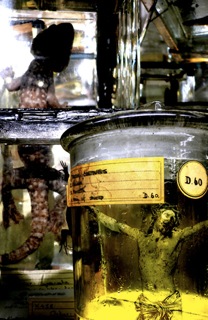
The religion-science relationship has captured the attention of experts and laity alike, resulting in a plethora of theories and typologies of the relationship, mostly based on or in reaction to the widely believed notion that religion and science are conflictual in nature. Today, from Dharamsala to Vatican City, religion-science pairings are increasingly and enthusiastically embraced, empirically crushing the conflict thesis. Theoretically, this thesis has been challenged by an intellectual-historical perspective that demonstrates the dynamism of ‘religion’ and that religion and science have not always been ontologically distinct. Discourse analysis also theoretically challenges the conflict thesis, as it indicates the fluidity of concepts, the porous boundaries between systems of knowledge, and the social construction of knowledge. Thus relating religion and science according to a typology of relationships is doomed to fail, since it theoretically rests on the fact that religion and science are two distinct, static phenomena. Where does this leave us in method and theory in the study of religion and science? How can the religion-science relationship be defined? And, more broadly, how can fluid concepts and changing discourses be defined without violating their dynamism and dependence on related ideas?
I argue to understand an idea its relationality must be examined. ‘Relationality,’ contrary to the problematic binary indicated by ‘relationship,’ is a state of unitary being. I define ‘relationality’ as relationship at an ontological level: the manner in which a thing or idea exists relative to another or others. Like the Buddhist parabolic three sticks standing upright and leaning against each other, if one is taken away, the whole construct falls. From the perspective of relationality analysis ‘religion’ and ‘science’ are co-producers of particular meaning structures. The object of analysis is the particular ontological structure that the given relationship relies on. By defining ‘religion’ and ‘science’ in terms of one another, a typology of relational structures can emerge from the data, accounting for all constructs of meaning and putting them in perspective, capturing the range and complexity of relative concepts in a dynamic model.
Within a theoretical framework of discourse analysis, this research project will analyze the entanglements of ontological discourses to demonstrate religion-science relational constructs, focusing on how relationship is itself discussed and organized. The data set consists of academic and popular, scientific and religious publications that address religion in the natural sciences and vice versa, in which a clear entanglement between scientific and religious ontological discourses is visible. The relational constructs involved can heuristically be understood to be one of identity, representation, or causality. The ‘identity’ construct constricts the meaning of one concept in relation to another through reductive explanation, demonstrated through two case studies that differ in regard to perspective. The case of ‘God on the brain,’ or the reductive localization of religious experience in neurophysiological processes, is used to exemplify the scientification of religion. The religionation of science is demonstrated through the case study of ‘scientism,’ a reductive explanation of scientific ideology as religious. ‘Representation’ describes an expansive process in the attribution of meanings, also consisting of two perspectives. ‘Holy physics,’ or the case of scientific discoveries interpreted not only as religiously significant, but moreover as religious itself, indicates a religiosity of science. Buddhist meditation in the context of neuroscience makes up the case study of ‘contemplative science,’ which exemplifies the scientificity of religion. Finally, the relational construct of ‘causality’ gives added meaning to two concepts not in direct relation to each other, but rather from a broader perspective encompassing both. This religion‐science familiality is captured by the example of ‘shared foundations’ of religion and science, in terms of cognitive and bio-evolutionary bases, intellectual, historical underpinning, and ethical premises.
Exploring how these constructs frame the meaning of relationship demonstrates complex entanglements that confound notions of fundamental separation, a theoretical problem in other areas as well, like religion and secularism. Relationality analysis has the potential to provide deeper nuance into the manner of which discourse entanglements manifest and to produce a meta-model of concepts to replace analytically problematic, rigid categories. It is the aim of the research project to test this hypothesis and to demonstrate its usability for discourse theory generally and for the study of religion and science specifically.
Jelle Wiering
Sexuality, religion, and secularism
For many African migrants in Europe, religion plays an important role in the process of conceptualizing and developing notions of sexual-wellbeing. Having arrived in the Netherlands however, these migrants experience this role of religion to be problematized, as it is often subject to Dutch scepticism and marginalization. Moreover: it appears that the allegedly 'neutral' Dutch secular environment in fact breathss other specific notions of sexuality, held to be liberal, free, and above all: 'typically Dutch'.
The encounter between the Dutch organizations focusing on sexual education and the migrants can be considered a prism for investigating the interaction of the religious and the secular in our current secular age. The encounter is an illustration of the fact that such societies are facing the difficult task of coming to terms with the continued existence of religion in an increasingly secularized environment.
This project looks through the eyes of the organizations, and explores how Dutch NGOs, FBOs and semi-government organizations negotiate within this encounter of secularity, secularism, religion, and sexuality. Moving beyond the understanding of religion as waning in the face of modernity, this project will help us to develop adequate frameworks that can help us to understand how sexuality is part of the post-colonial (re)shaping of the relations between religion, secularity, and modernity.
Lisa Züfle
Meaningful Foods. Enacting the Divine at the Sri Jagannath Tempel in Puri, Odisha.
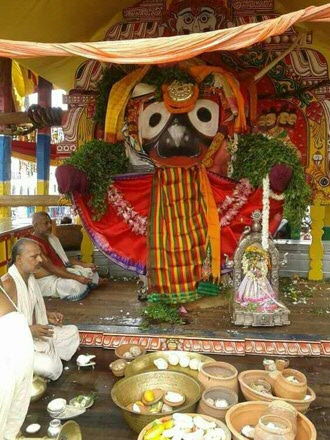
This research is concerned with the central role divine foods (mahaprasad) play in the maintenance, continuity and expansion of one of India's largest Hindu pilgrimage sites, the Jagannatha Temple in Orissa. In the East Indian temple city of Puri, almost all life and economy revolve around this central religious institution. As the largest employer, spiritual space and dwelling place of the gods, as well as the main consumer of food, it is the linchpin of everyday life in Puri. Several times a day a series of dishes are produced for the gods within an elaborate ritual production process, distributed to the temple community and sold to thousands of pilgrims and visitors as the place’s main attraction on the temple market. Thus, my thesis gives a systematic overview of the production, distribution and use of this central religious resource. The aim is to investigate the way how the value of mahaprasad is created and how the divinity and purity of Jagannath is enacted through the engagement with the medium within a specific ritual corpus.
By illustrating the performance of all these significant actions, most importantly through the means of staged secrecy, it is shown how mahaprasad is established as the embodiment of the divine thereby making Jagannaths’ grace tangible.
Thus, food becomes an important resource only through various meaningful practices, while it is produced, distributed and consumed within a specific set of rules and technics. In addition to the topic of how profane food is actually transformed into divine food, this work aims to show how this spiritual quality on the one hand is used as a ritual commodity sold to pilgrims and devotees in a bazaar and on the other hand how it is formalized as a unique feature to illustrate the importance of the local "Jagannath culture" or "Jagannath consciousness".
| Last modified: | 17 March 2025 2.35 p.m. |
